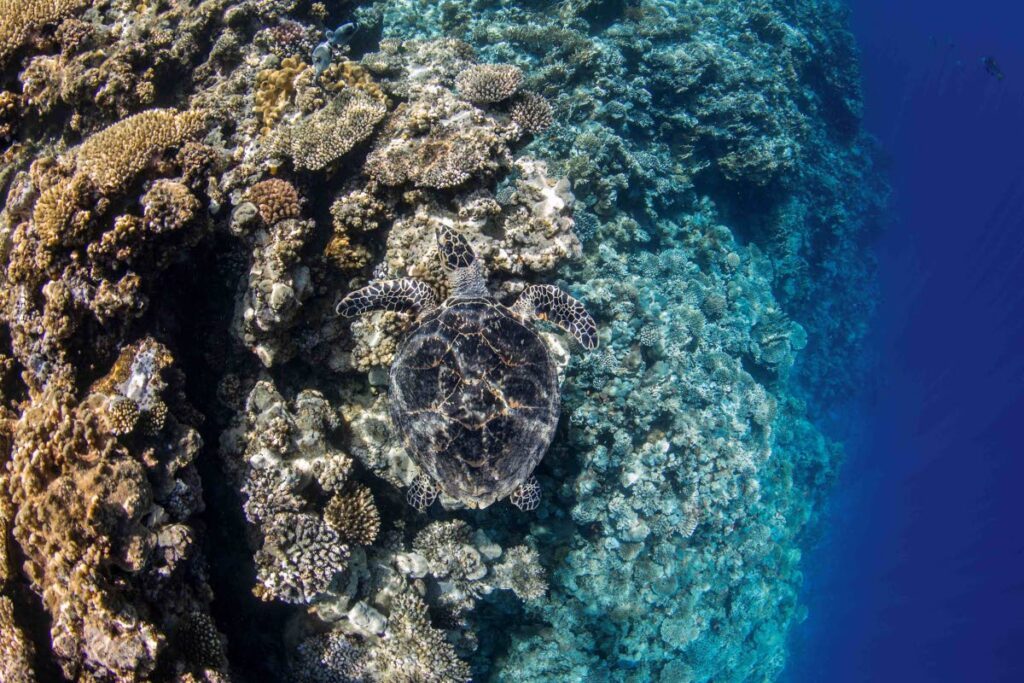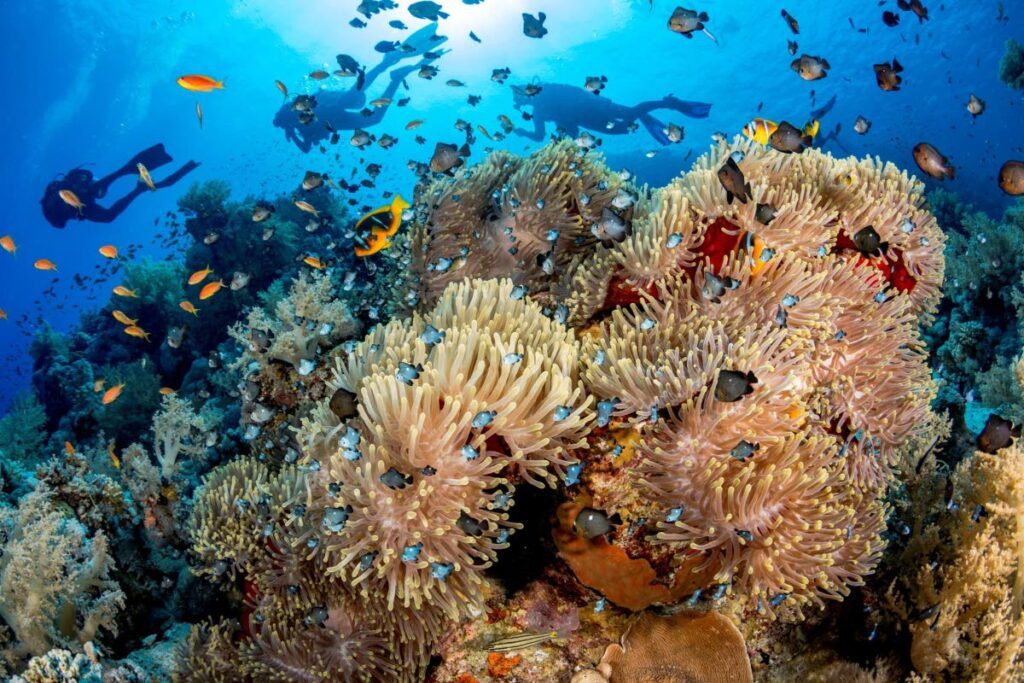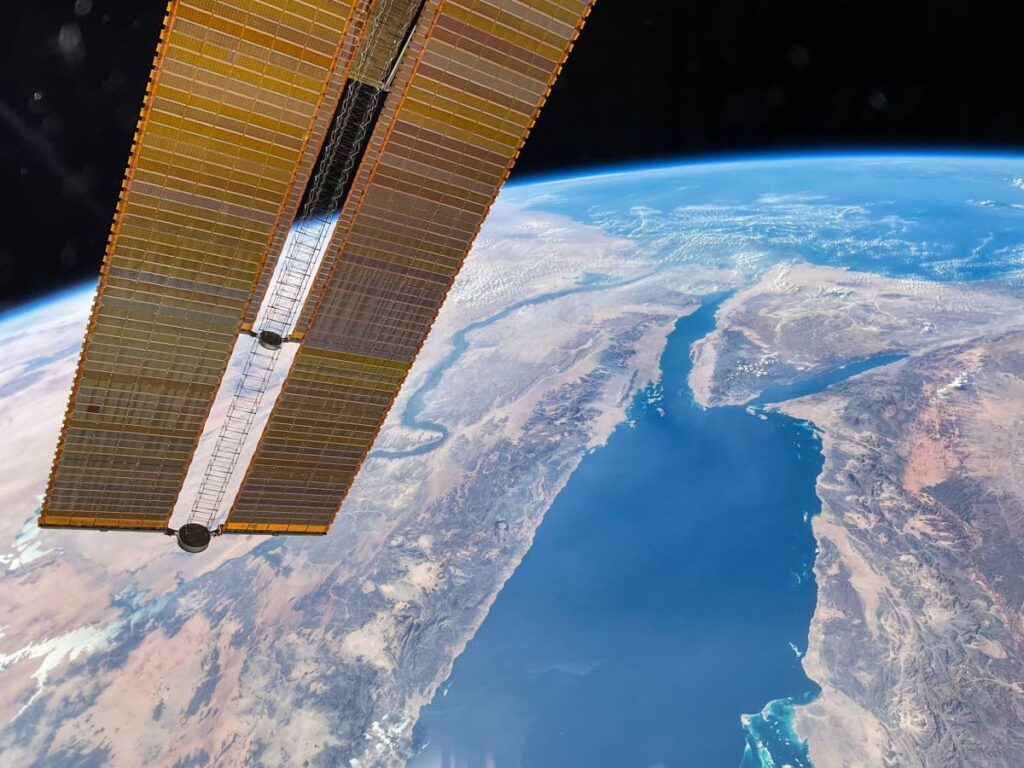Coral reefs of the Red Sea

Dr Anjani Ganase, coral reef ecologist, compares coral ecosystems of the Red Sea and the Caribbean.
Coral scientists around the world are monitoring their native reefs as well as those that have adapted to higher temperature, looking at coral refuges.
In the Old Testament, the passage through the Red Sea is a miracle caused by God, to allow the Israelites to leave Egypt, led by Moses.
The Red Sea was first explored by the Egyptians and Greeks looking for routes for trade between Africa and Asia. It is not a large body of water; in fact, it is one-sixth the size of the Caribbean Sea. But it is long (2,250 km) and narrow (355 km) wide – the distance between Trinidad and St Lucia) stretching from the Gulf of Suez, where the Suez Canal connects to the Mediterranean Sea, and to the south, it flows into the Indian Ocean.
Geologically, the Red Sea is part of an extensive rift system that runs north-south all the way down the African East Coast to Mozambique, and is part of the Great Rift Valley system.
It is actually one of the planet’s youngest basins, and continues to expand through the centre of the basin.
The name Red Sea has a couple of possible origins, some ecological in origin, relating to the cyanobacteria (Trichodesmium erythraeum) that blooms in it, occasionally turning the normally aquamarine sea to a reddish-brown colour.
The unique geography and resulting ecology of the system, as a result, are fascinating for marine research.

Very salty, very hot
Unlike Trinidad and Tobago, whose surrounding waters are flushed by the nutrient-rich freshwater of the Orinoco, especially during the rainy season, the Red Sea is one of the saltiest bodies of water on the planet. It lies in a very hot and dry location, bordered by six desert countries, which means that not a single river flows into it.
No freshwater influx and high evaporation result in very salty conditions. The low-nutrient, warm and transparent water makes it ideal for some extensive coral reefs that fringe most of the coastline. The coral reefs there are home to over 1,000 invertebrates, and 200 species of soft and hard corals.
Compare this with the larger Caribbean Sea, which is home to about 180 hard and soft corals, and TT, which is home to a much smaller subset.
The Red Sea is rich in endemic species (marine species found in no other seas or oceans) which make up 15 per cent of its biodiversity. There are species in common with the Indo-Pacific region.
This endemism is the result of the unique environment. There is connectivity, however limited, via the narrow strait called Bab-el-Mandeb Strait which is 20 miles wide with the Indian Ocean.
In the Caribbean Sea, you will find no corals in common with any other region in the world and has high endemism of hard coral species. If you dive in the Red Sea, it will be like diving in another world, with very few similarities with the Caribbean.
The Red Sea is a unique marine environment compared to other coral reef regions as well. Its basin is relatively shallow: 40 per cent is less than 100 deep. The deepest section occurs along the mid-ocean ridge. The deepest area is the Suakin Trough, which is just over 3,000 metres deep. While the EEZ around TT is relatively shallow, as our islands sit on the South American continental shelf, there are areas that drop to about 3,500 metres.
Red Sea corals like the heat
The water is also naturally very warm, meaning that corals in the Red Sea naturally have a higher thermal tolerance. The tolerance limit for Red Sea corals (in the south) is about 32-34.5 C, while Tobago’s corals become severely stressed above 29 C.
This means that the Red Sea might be the perfect ecosystem to explore for coral adaptation to a warmer planet.
This does not, however, mean that the marine life of the Red Sea is immune to global warming, with temperatures expected to increase by two-four C by the end of century.
Coral reefs in the Red Sea, similar to reefs in other regions around the world, have experienced an increasing number of bleaching events since 1998.

Nevertheless, given the higher thermal tolerance, especially of the coral reefs in the north, scientists consider them a coral refuge.
The Red Sea boasts thriving diving tourism, but coastal development, and growing human populations, especially along the Saudi Arabian coast, are increasing human impacts on the reef systems in the form of pollution and habitat destruction.
From the Red Sea to the C'bean
As ocean temperatures continue to rise, scientists are looking at places where corals tolerate higher temperatures. The challenge is not simply to monitor the reefs and coral species in our islands, but to be aware of the reefs that may have already adapted to heat and stressors that are now increasing in the Caribbean.
On land, some species are slowly migrating to places where conditions are becoming what they have been accustomed to. Will migration ensure survivability of some coral species?

Comments
"Coral reefs of the Red Sea"